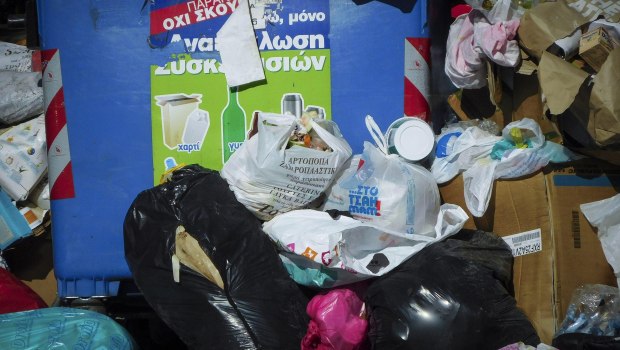Demographic SOS: In 15 years, 45,000 first graders “disappeared”!
Source: ProtoThema English
The 71,181 “first graders” of the 2025–2026 school year — children beginning their educational journey in the 1st grade of primary school — are the smallest cohort in modern Greek history. Their meager numbers reflect, in full and with dramatic consequences, the country’s demographic problem. And the outlook for the immediate future is even more somber and ominous, since low birth rates inevitably lead to decline with a “guaranteed” outcome.
The 71,181 pupils in this year’s 1st grade were born in 2019 (both in and outside Greece), with a ratio of about 9 natives to 1 foreigner. Yet, according to official population data, in 2019 there were 83,756 recorded births. This means that somewhere between the registry office and the online registration platform for primary school, 12,575 children were “lost.” In percentage terms, that dropout corresponds to about 15%.
The coming crash
If we project this trend forward — even hypothetically — by 2030–2031, the number of first graders may not even reach 60,000. That year, children born in 2024 will start school. And in 2024, births in Greece didn’t even reach 70,000 — the exact number was 69,675.
By tradition, the 1st grade of primary school is the demographic mirror of our country. The ongoing annual shrinkage of the Greek population inevitably affects all levels of education. Although the demographic issue has not yet been fully reflected in university entrance exams, education experts foresee the “crash” within the next three years. By 2028–2029, the shrinkage of the domestic population is expected to become heartbreakingly apparent, the outcome of a worsening 15-year trend.
Indicatively, in 2010 registrations for 1st grade reached 115,000 compared to just 71,181 in 2025. That means that within 15 years, roughly 4 out of 10 first graders vanished. If they had been born but somehow lost, it would be an unspeakable national tragedy. But the fact that around 44,000 children were never born in Greece brings anything but happy feelings, regardless of the causes of the low birth rate. Put differently: those 44,000 “missing” first graders could have filled — but never did — 1,760 classrooms of 25 pupils each.
Concerns
A similar situation appears in secondary education: registrations of new students in 1st year middle school (Gymnasio) are steadily declining by as much as 20%.
The immediate consequences for the education system mainly involve resource-saving strategies by the Ministry of Education: some schools are shut down, classes merged, etc. This, in turn, affects the quality of public education. Smaller classes mean better learning conditions and more teacher attention per child. But when schools merge due to fewer students, classroom numbers rise again, with the opposite effect.
Even so, the pupil–teacher ratio hasn’t shifted much in the past four years: around 8 pupils per teacher on average, both in primary and secondary education. This is the best ratio in the EU — 8.2 pupils per teacher in Greek primary schools, compared to 13.4 in Europe, and far better than Romania’s crowded 18.4. Yet this “advantage” exists only because the total number of children is shrinking.
The redistribution of pupils is indirectly confirmed by the Ministry of the Interior: since schools are used as polling stations, closures affect election planning. “We sometimes designate a school as a polling station,” noted General Secretary Athanasios Balerbas in March, “but that building has ceased to function as a school, because there are too few pupils — they’ve been moved elsewhere.”
One birth, two deaths
“In essence, today in Greece we have 1 child for every 2 deaths — and that’s crucial,” Mr. Balerbas told ERT. Indeed, nothing illustrates the demographic crisis more starkly than this.
The numbers are merciless: in 2024 Greece recorded 69,675 births and 128,259 deaths — that’s 1 newborn for every 1.8 deaths. Fifteen years earlier, in 2010, there were 114,766 births and 109,084 deaths. That year was the last with a positive “natural balance” (births > deaths). Since 2011, deaths have outnumbered births. The peak of the baby boom came in 2008 with 118,302 births, according to ELSTAT. Between 2008 and 2024, births declined by 41.1%. Between 2010 and 2024, they dropped by 39.28%.
An aging population
ELSTAT’s latest report (“Greece in Numbers”) contrasts 2011 — the first year deaths surpassed births — with 2021, the most recent census. In 2011, Greece had 10.8 million residents. By 2021, this had dropped to 10.48 million — 333,799 fewer, a 3.1% decrease.
Even more worrying is the rise in older age groups: between 2011 and 2021, people over 80 increased by 31.3%, those aged 60–69 by 16.8%, and those aged 50–59 by 10.9%. Meanwhile, reproductive-age groups shrank dramatically: –22% for ages 20–29, –23.2% for ages 30–39. In 2021, 59.4% of the population was over 40, compared to 52.8% in 2011. Children aged 0–9 dropped by 16.3% over the same decade, the worst period of Greece’s modern crises.
Housing and children
Prime Minister Kyriakos Mitsotakis has repeatedly stressed the demographic issue, calling it a “social and national problem of top priority,” even a “bomb under the nation’s foundations.”
At the end of 2024, then-Minister of Family and Social Cohesion (now Minister of Education) Sofia Zacharaki announced a 10-year National Action Plan for Demographics, with more than 100 measures across sectors, a €20 billion budget.
These included increased childbirth allowances (€2,400–€3,500 depending on family size), childcare vouchers, the “Neighborhood Nannies” program, and housing-support measures.
New measures
The government is now preparing further, more targeted policies ahead of announcements by the Prime Minister at the Thessaloniki International Fair (TIF). The approach reportedly emphasizes housing alongside demographics: if young couples cannot afford housing, they cannot start families.
The Prime Minister’s announcements at this year’s TIF are eagerly awaited, particularly concerning efforts to halt Greece’s demographic decline. The TIF, coinciding with the start of the school year, inevitably highlights — in practice — how few the new first graders and new middle-schoolers have become.
Ask me anything
Explore related questions
The original article: belongs to ProtoThema English .




